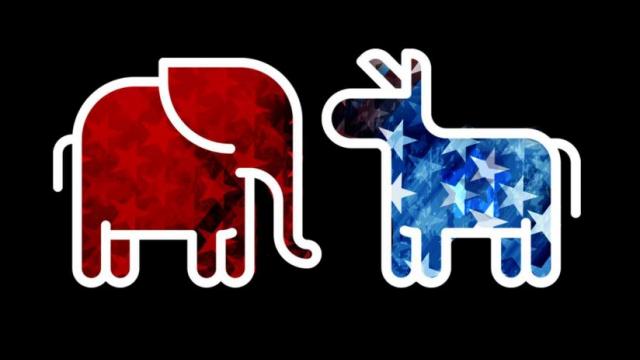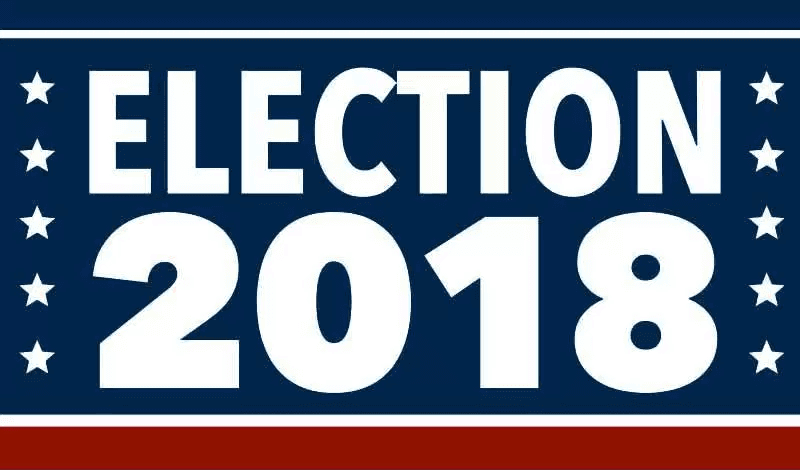
With the nationwide Democratic and progressive election victories in 2017, followed by Conor Lamb’s February win in Pennsylvania’s 18th congressional district, pundits have been pointing to a potential Democratic “blue wave” in the 2018 midterms. The extent to which that expectation is realized, however, will be determined by major transformations in political ideologies and electioneering strategies that Democrats must be aware of – and respond to.
Looking first at ideology, the populism of Bernie Sanders and Donald Trump is a response to the failure of the neoliberal market model that both parties followed for decades, but which Republican supply-siders pushed to its extreme. The problem for Republicans is clear: Popular support for their “trickle down” policies and cuts to social programs has reached a low point.
Despite their best attempts to sell the 2017 tax bill as a middle class tax cut, Republicans were never able to generate much popular support for it (several members of Congress plainly admitted they were under tremendous pressure from their large donors to “get it done or else"). The electoral proof of their predicament was demonstrated in the recent Pennsylvania election when Republican ads extolling the virtues of the tax cuts were quickly pulled after it became clear that they were ineffective if not counter-productive.
It seems highly unlikely that, absent a massive and successful propaganda campaign, the GOP can win many upcoming elections running on the usual tax and spending cuts line, even in districts like PA-18 where Trump won by 20 points in 2016.
The implications going forward are important. As a party, the Republicans have painted themselves into a corner on tax and spending issues. They need the money from their big donors to run their election campaigns. But only a minority of voters are going to support that key item of their agenda, and many have been alienated by it. This opens a major window of opportunity for Democrats to seize the leadership on populist economic issues and rebuild their relationship with organized labor and blue-collar workers, something Rep. Lamb appears to have done with some success.
Finding new power on the left
But it wasn't only organized labor that helped Lamb across the finish line. Just as important were grassroots, small-”d” democracy groups that have emerged in Pennsylvania and, it seems, just about everywhere else in the U.S. In the Democracy Journal article “Middle America Reboots”, scholars Theda Skocpol and Lara Putnam explain the emergence of a new kind of politics in the U.S. pushed by mostly middle and upper-class, college-educated white women from suburbs and towns.
Ideologically, this segment stretches from the center to the progressive end of the spectrum. Most identify as Democrats, although Skocpol and Putnam find that the common concern of these “pop-up groups” is “protecting American democracy and reclaiming citizen ownership of public life.” Interestingly, while many were motivated by the Clinton loss and the 2017 Women’s March, they aren't interested in revisiting the Clinton-Sanders primary and prefer to look ahead.
Organizationally, these new groups are embedded in their local communities and do not constitute a national movement in the standard way such movements are understood. For instance, they don't have a national leadership or organizational structures, unlike most advocacy organizations and many groups associated with "the resistance.”
How have these groups coalesced into effective organizations? Skocpol and Putnam find that they rely on “relational organizing,” meaning that individuals have used their existing personal relationships to build extensive volunteer and activist networks. They have also been working with labor groups like the SEIU to develop skills and tactics to advance their missions. Their effectiveness has been enhanced by the fact that many of the women organizers are professionals with significant communications and management skills. This is a newly mobilized demographic bringing significant social connections and capabilities to the political scene.
These groups present a golden opportunity for state and local Democratic party functionaries as they go door-to-door canvassing, with a strong inclination to “contest everything.” But this is where the electioneering part of the equation comes into play. Putnam and Skocpol find that many Democratic party insiders “seem strikingly uninterested in the evidence that a surge of hands-on, face-to-face organizing – not just ‘enthusiasm’ – might have something to do with recent electoral victories, or could be relevant to future prospects.”
The problem is summarized succinctly by labor organizer and scholar Marshall Ganz, who wrote in The Nation article “How to Organize to Win” about the 2018 electioneering choice for the Democrats. In answering the question, “How can we organize ourselves to win?” Ganz argues that Democrats can either invest “millions of dollars in dueling algorithms, polls, and advertising that leave nothing behind after the election,” or organize “millions of people to rebuild power in city, state, and nation.”
In other words, they can either rely on – and pay big bucks to – the “consultant class” that “has turned politics into marketing, campaigns into advertising, candidates into brands, voters into data points, and debate into messaging,“ or they can engage directly with citizens to build an organizational backbone that will last for multiple election cycles and operate in between elections as well.
So far, based on Skocpol’s and Putnam’s findings, most local-level Democratic party operatives seem not to have understood the opportunity presented by these emerging grassroots organizations. In many cases, but not all, long-time party officials just don’t seem to get the transformational moment in which they find themselves.
This may be due, to a large extent, to their having to “play defense” for decades to protect their besieged and ever weakening political positions. Whatever the explanation, many local leaders are having difficulty embracing the potential of grassroots groups that are now organizing outside of their control. In addition, they're still wedded to a top-down electioneering model instead of embracing the face-to-face work that builds strong relationships between organizers and citizen voters.
What are the implications for the Democratic Party in 2018? Before answering this question, it’s important to recognize that party officials' responses to the changes are in no way uniform. In “The 7,383-Seat Strategy,”, Joan Walsh analyzes several states. In Virginia, for example, she found that Democratic Socialist Lee Carter had a difficult relationship with the state Democratic Party, but was embraced by local party officials. The grassroots are alive for the first time in decades, so it’s to be expected that there are differing views about what the new political force "means," and how the party should respond.
At the same time, the extent to which the Democratic Party establishment fully recognizes what is taking place may not, in fact, matter that much. This is because independent groups – many local, some national – are organizing and building power at the local level. Carter told Walsh that most of his institutional support came from outside groups including the Democratic Socialists of America (DSA), Let America Vote, Forward Majority, Swing Left, Planned Parenthood and others.
These were the kinds of groups that played a large role in the impressive Virginia victories last November, as well as in the Conor Lamb win in PA-18, likely eclipsing the influence of party efforts in some places. The same dynamic is likely to play out in the 2018 midterms, with pop-up groups, national resistance organizations like Indivisible, and the Democratic Party all pushing in the same direction to elect Democrats, if not always coordinating with each other.
In a minority of places, such as the recently held primary in Illinois where progressives tried to oust conservative Democrat Dan Lipinski, the groups may work against each other. Conflict is also emerging in primary fights where the Democratic Congressional Campaign Committee (DCCC) has weighed in, supporting more centrist, established Democrats.
Looking at the big picture, Skocpol and Putnam see “an unstoppable transformation” of local-level Democratic politics, concluding that “[a]t the current pace, it seems likely that the pop-up leaders and grassroots groups of 2017 will, by 2019, have repopulated the local layer of the Democratic Party in much of the country.” In some places this transformation may bring conflict with it; in others, it may happen relatively smoothly. In the end, the authors expect to see a “slightly more progressive” Democratic Party at the local level.
This might not seem like a huge improvement to progressives. But the renewed civic engagement driven by large numbers of activists and organizers holds the potential for major change. In bringing democracy to places where it has been dying, while rebuilding civic life, these new groups are reinvigorating local and state-level politics and thereby opening up spaces for progressive ideas and third parties such as the DSA and Working Families Party while electing Democratic majorities in Congress.
This transformation – already underway – also appears to be changing the way politics is done, as the old guard of the Democratic Party and its top-down approach to electioneering gets replaced by a more representative cadre a la Ganz that uses an organizing approach based on face-to-face relationship-building. Time will tell how this transformation impacts the nation's politics.
3 WAYS TO SHOW YOUR SUPPORT
- Log in to post comments












